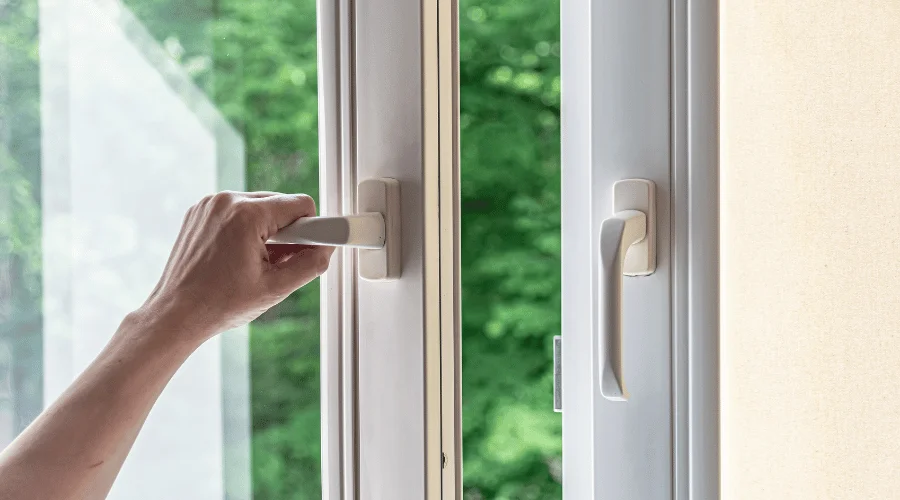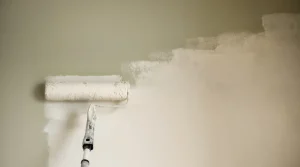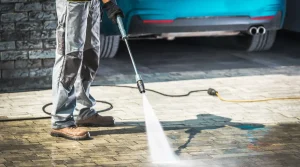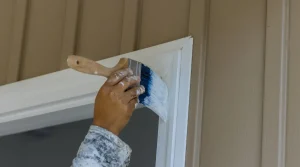Painting your house may be a fun and life-changing endeavor. but the lingering scent of paint fumes is often a less-than-pleasant side effect. The unmistakable odor can be bothersome and potentially harmful to your health. In this guide, we will explore what paint fumes are, how to properly ventilate your home during painting projects, the health impacts of exposure, and five practical tips to minimize the smell and keep your indoor air quality at its best.
Turn your residence into a masterpiece with our top-notch house painting services. Unleash the power of color and quality with New City House Painters
What Are Paint Fumes?
Paint fumes are the volatile organic compounds (VOCs) that wet paint dries. These compounds can include a variety of chemicals, such as benzene, formaldehyde, and toluene. While many modern paints are formulated to have low VOC levels, some still release these substances into the air during the painting process. The distinct smell of fresh paint is a telltale sign of these fumes.
How to Ventilate Your House When Painting
Proper ventilation is crucial when undertaking any painting project to ensure that paint fumes don’t accumulate indoors. Here are some practical ways to ventilate your home:
- Open Windows and Doors: Maximize natural ventilation by opening windows and doors in the painted room. This allows fresh outdoor air to flow in and helps carry away the fumes.
- Use Fans: Positioning fans strategically can enhance air circulation within the space. Set up box fans or oscillating fans to direct air toward open windows and doors, creating a steady fresh air flow.
- Create Cross-Ventilation: Place fans at opposite ends of the room to establish cross-ventilation. This technique encourages a continuous exchange of indoor and outdoor air, helping to disperse paint fumes more rapidly.
- Ventilation Systems: If you have a central HVAC system, ensure it is running and set to the “fan” mode. This will facilitate air circulation across the whole house and aid in removing paint fumes.
- Air Purifiers: Consider using activated carbon filters to capture and neutralize VOCs. These devices can be handy in smaller rooms or areas with limited natural ventilation.
Impact of Paint Fumes on Health
Exposure to paint fumes can have various health implications, ranging from mild irritations to more severe conditions. Here are some potential health impacts:
- Respiratory Irritation: Paint fumes could worsen respiratory symptoms, including wheezing, coughing, and shortness of breath.
- Headaches and Dizziness: Prolonged exposure to paint fumes may cause headaches, dizziness, and nausea. These symptoms often occur when ventilation is inadequate.
- Eye and Throat Irritation: VOCs released by paint can irritate the eyes and throat, causing discomfort and redness.
- Allergic Reactions: Certain people could be more susceptible to paint fumes and experience allergic reactions such as skin rashes or itching.
- Long-Term Health Risks: Chronic exposure to high levels of VOCs, found in certain paints, has been linked to more serious health issues, including harm to the central nervous system, kidneys, and liver.
How to Minimize the Smell: 5 Tips
Now that we are aware of the possible health hazards connected to paint fumes let’s explore five practical tips to minimize the smell and create a healthier indoor environment during and after painting:
- Choose Low-VOC or VOC-Free Paints: Opt for paints labeled as low-VOC or VOC-free. These formulations release fewer harmful chemicals into the air, making them safer for your home and the environment.
- Time Your Painting Projects Wisely: Plan your painting projects for times when the weather allows for good ventilation. Avoid painting during extremely hot or humid conditions, as this can slow down the drying process and prolong the release of fumes.
- Seal Off Unpainted Areas: Close doors and windows in adjacent rooms to prevent paint fumes from spreading throughout the entire house. Use plastic sheeting or painter’s tape to seal off openings and gaps.
- Take Regular Breaks: Take regular breaks during the painting process to allow the room to air out. Step outside for fresh air to minimize your exposure to fumes.
- Use Odor-Absorbing Materials: Place bowls of activated charcoal, baking soda, or white vinegar in the painted room. These substances can help absorb and neutralize paint odors.
Painting your home can be rewarding, but it’s critical to consider how paint fumes may affect your health and the air quality in your house. You may reduce the odor of paint fumes by using the advice in this tutorial, create a well-ventilated environment, and enjoy the results of your home improvement project without compromising your well-being. Remember, a little planning and precaution ensure that your home remains a healthy and comfortable space for you and your loved ones.







